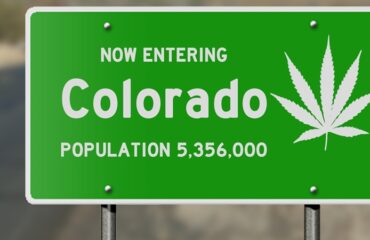Abolitionists in America played a significant role in abolishing chattel slavery. They disagreed with the inhumane treatment and methodology of the slave trade model, which represented the status quo of the wealth generation. Abolitionists first understood needs and then developed strategies that assisted escaping slaves in multiple ways. From providing shelter and food, to fighting to change laws, abolitionists risked their coveted social status, and many times the physical safety of themselves and their families. Abolitionists were, and continue to be, part of the unsung heroes in African American history.
The abolitionist movement continues to be strong today and take on many forms, like Collaborative Courts that openly recognize and act regarding the disparities and challenges African American participants face, in addition to recovery needs.
Collaborative Court programs must continue to recognize the alarming gaps in many areas their African American participants must endure. Collaborative Courts that require job attainment for instance, to discourage criminogenic behaviors, must account for the enduring disparities in education, wealth, and access to equal justice.
Education

African Americans continue to make progress on the educational front. Figure 1 illustrates that African American high school education attainment is at or above the national average. However, this same graphic also reflects the glaring disparities linked to attaining a bachelor’s degree or higher within this same population. Thus, with many jobs that pay a living wage requiring an undergraduate degree or advanced certifications, African Americans are continuing to fall behind. According to The Brookings Institute, even with earning a bachelor’s degree, on average, African Americans enter the workforce with an additional $7,000 college related debt when compared with their white peers. Escalating educational debt taken on by African Americans, who neither complete their degree plans nor secure a living wage occupation, only compounds their inability to secure assets for generational wealth distribution.
Wealth

Wealth, defined here as a person’s economic net worth, is the primary means to distribute accumulated assets to those generations that follow. Wealth creation is a continuing fleeting phenomenon for African Americans, with a primary reason of enduring unemployment disparities. Employment largely affects the ability to generate retirement savings, whether individually or through employer sponsored programs (e.g., Roth IRA, 401k, etc.). According to 2021 data by the U.S. Bureau of Labor Statistics, unemployment rates for African Americans continue to be almost double that of whites regardless of educational attainment. Figure 2 illustrates the alarming inequalities in Median Wealth of African Americans, sitting at less than 6% of white median wealth. The same report revealed that, in 2017, 61.7% of household wealth came from home equity and retirement savings. Based on the capacity to obtain quality representation, wealth also has a direct and indirect impact on the ability to mount an equitable defense in the outcomes of judicial proceedings.
Equal Justice
Policing policies and laws, that require a heavy officer presence, many times leads to over policing behaviors within trust-fractured African American communities, which historically has had and still has a stigmatizing effect on property values. These actions include disproportionate stops, frisks, and ticketing, that lead to unaffordable fines, eventual arrest warrants, and ultimately job loss. Thus, if charged with an alleged crime, the ability to either pay for a bail bond or to mount a viable defense requires leveraging wealth, which most of the time involves the use of home equity as collateral. As a result, with racial disparities in home ownership for African Americans, many times in an undervalued area, it ultimately leads to pretrial confinement with the use of a much-overworked Public Defender. Yet, there are still opportunities to correct understood disparities and instill hope in a demeaning justice system.
Hope Through Fairness
There are still a multitude of race relation issues yet to be resolved, and it will take a willingness to engage in a dialog that leads to policy and enforcement for true change to occur in America. Mobile devices, home security systems, and cameras mounted in vehicles, etc., have created the ability to both capture and prove a negating narrative submitted by the historical power structures (e.g., police officer reports, security guard testimonies, etc.). Furthermore, African American scholars, investigative journalism, with the aid of advanced technology and support through civil disobedience that pressures political power structures, will continue to challenge educational systems, the economic barriers to wealth generation, and the administration of equal justice under the law. Collaborative Courts aide in this movement through a model of working together for what is best for the participant verses incarceration alone.

Collaborative Courts, such as Veteran Treatment Courts (VTCs), that use volunteer mentors have a distinct opportunity to leverage the experience and establish trust of participants without breaching confidentiality. Mentors are an untapped treasure trove of information if court teams have the will to listen. For instance, motivated in part by the death of Mr. George Floyd, three VTC mentors published an article to share their perspectives of African American Veterans within VTCs and Veteran Diversion Courts, and offered recommendations to assist abolitionists within the judiciary.
Conclusion
Traditional court practices are still supported by all who uphold the law concerning egregious offenders. Still, there are specific Collaborative Courts that are dedicated to equality, and they are remarkably taking a position aligned with the ideological position of the modern-day abolitionist within the judiciary. However, Collaborative Courts continue to operate in silos throughout America with little cross-collaboration. Judiciaries must continue to educate themselves regarding disparities in education, wealth, and access to equal justice for African American participants. For those in judicial power positions, who may oppose accepting the uncomfortable truth concerning slavery, racial discrimination, and their negative impacts on African American access and completion rates of these transformative programs, it should raise considerable questions as to their ability to dispense justice. Emblematically, chattel slavery had two sides, the white oppressor slave owner perspective, and that of the white freedom fighter abolitionist. The prevailing distinctive question is:
Will the judicial power structures within Collaborative Courts desire an enduring legacy tied to the implied guilt of the slave master, or to that of the enduring pride of the courageous abolitionist?
Get more articles like this
in your inbox
Subscribe to our mailing list and get the latest information and updates to your email inbox.
Thank you for subscribing.
Something went wrong.






